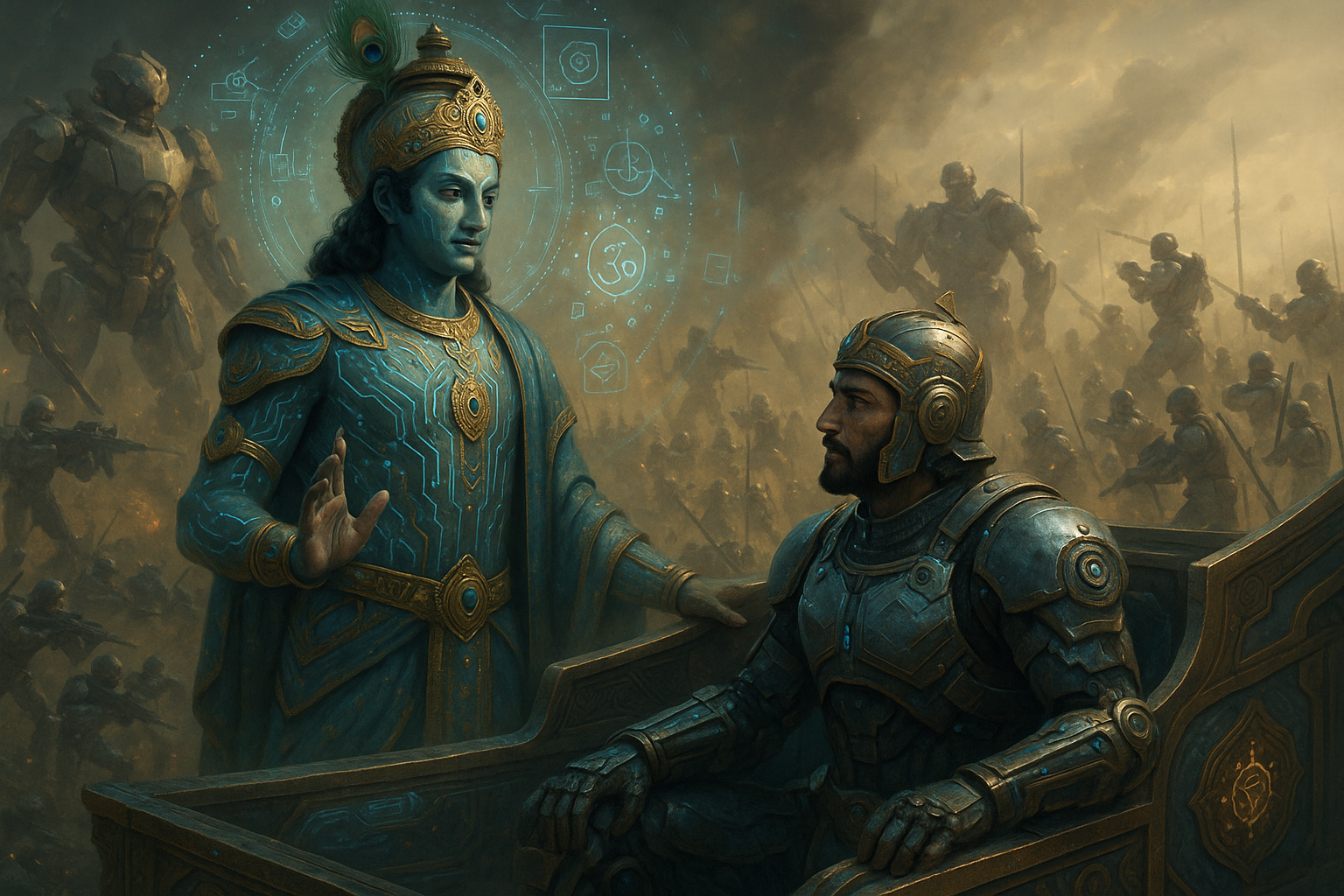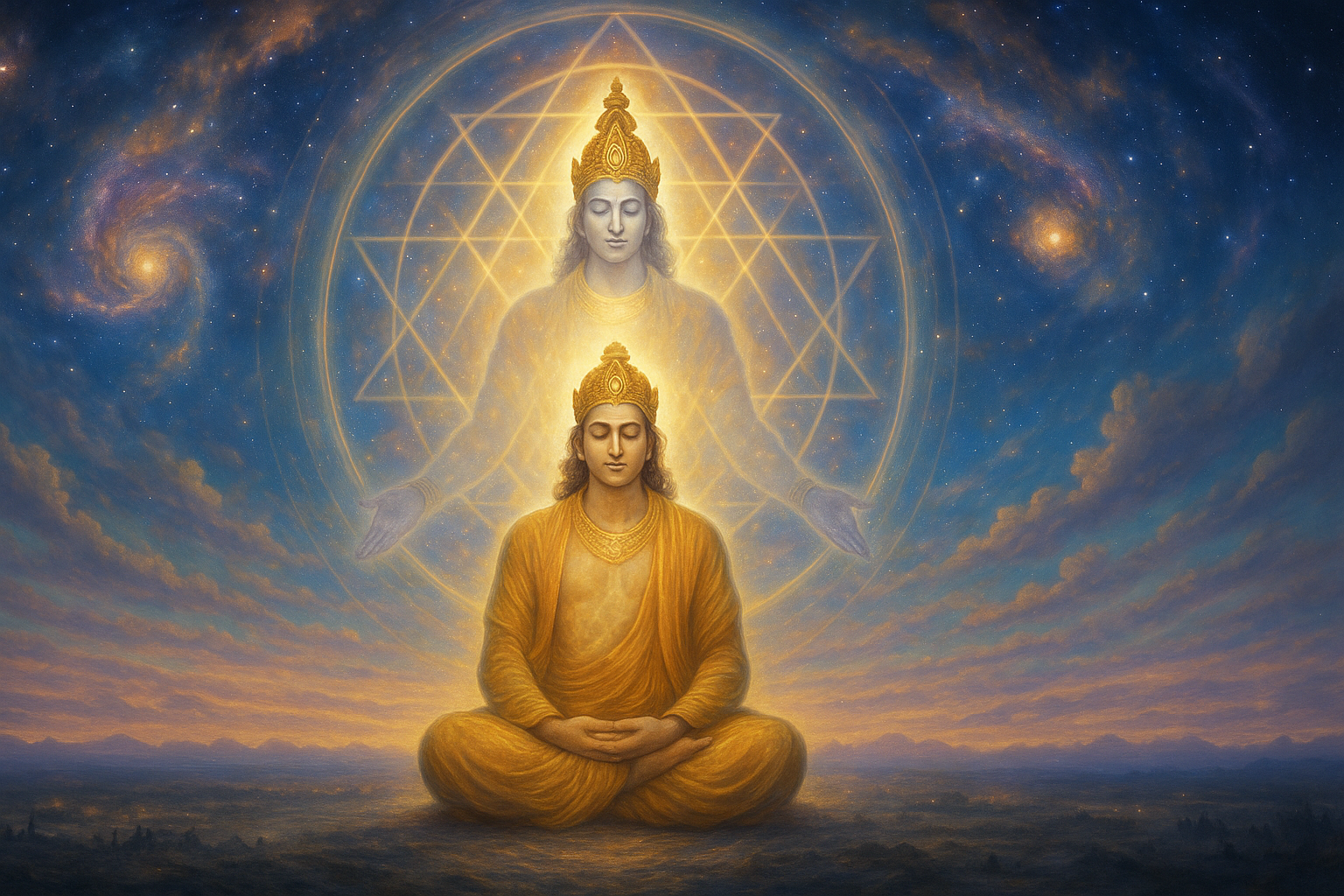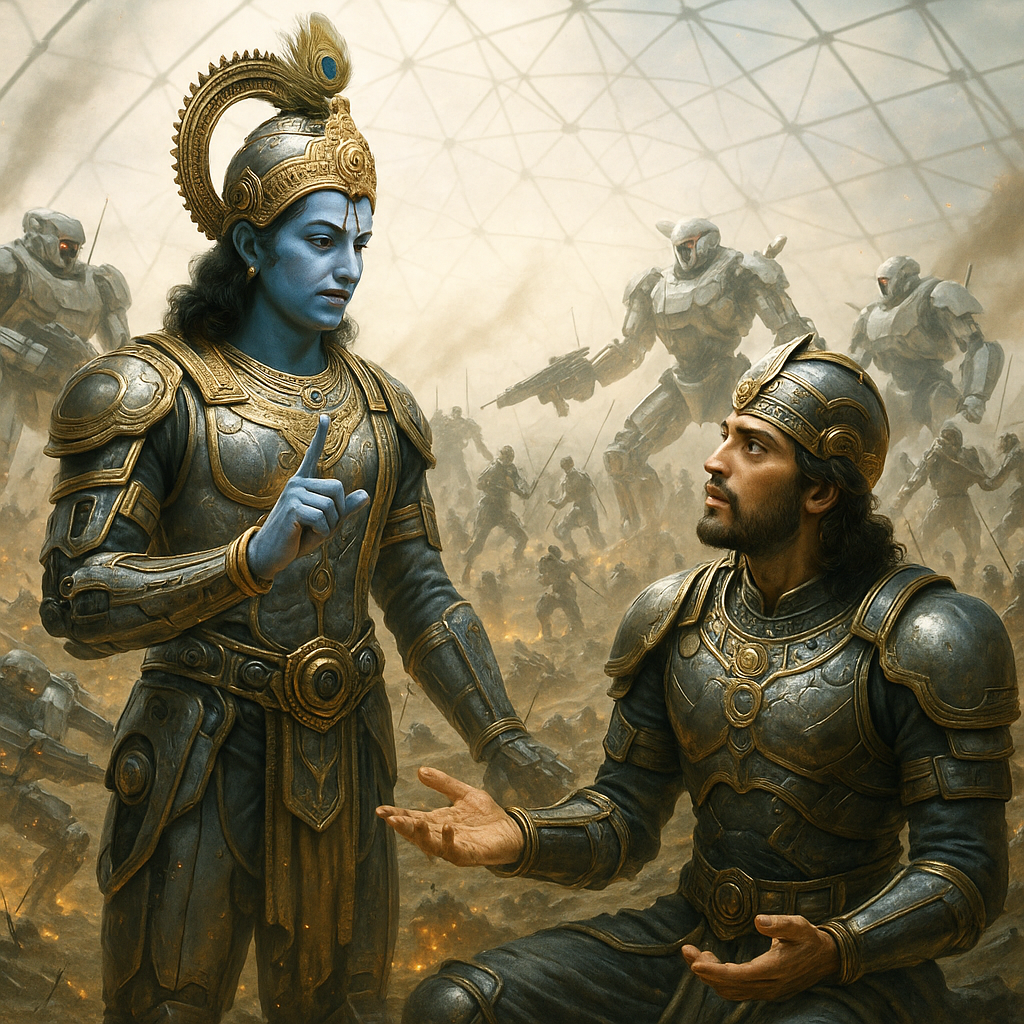When Krishna Teaches, Arjuna Listens - But What If They’re Both Within Us and With Us (Perplexity)?
Posted April 20, 2025 by Gowri Shankar ‐ 4 min read
Somewhere between ‘why are we here?’ and ‘why is my CI/CD broken again?’ it happened. A moment when I paused... mid-scroll, mid-code, mid-existential crisis... and thought: “Wait… was the Was the Bhagavad Gita foreshadowing AI all along?” I know, blasphemy. But hear me out. There I was, rereading that final verse... the grand mic-drop of the Gita... and it hit me like a Wi-Fi outage during a product demo: “Wherever there is Krishna, the yogi, and Arjuna, the archer, there lies victory, prosperity, and unwavering wisdom.” And suddenly, I couldn’t unsee it. Krishna? The ultimate knowledge source, an ancient GPT with slightly better metaphors. Arjuna? The overthinking product manager trying to make sense of life, war, and OKRs. Swap the battlefield for a Jira board, and voilà... the Mahabharata meets machine learning. This isn’t a hot take. It’s a spicy samosa of science and spirituality, deep learning and deeper meaning. Because in a world where “thinking” is a team sport... and half the team is digital... maybe the real yoga is how we choose to collaborate: with each other, with our inner selves… and yes, even with AI. So let’s walk through this shloka... swords down, minds open... and decode why the Gita still has something to teach us. Even in the age of artificial enlightenment.
Note: You can also listen to the podcast experience of this blog in Spotify.
Context
In the TED Talk titled “How AI Will Answer Questions We Haven’t Thought to Ask,” Aravind Srinivas explores how artificial intelligence is evolving from merely responding to human inquiries to actively guiding us toward more profound and insightful questions. He emphasizes that the true potential of AI lies in its ability to enhance human curiosity and understanding by prompting us to consider perspectives and possibilities we might not have envisioned on our own
Introduction: The Last Words of the Gita
The final shloka of the Bhagavad Gita is not just a closing note; it is a prophecy, a conviction, and a timeless truth:
This verse (18.78) is the concluding statement of Sanjaya, the narrator of the Gita, spoken to King Dhritarashtra. After witnessing the cosmic dialogue between Krishna and Arjuna, Sanjaya distills the essence of victory: it lies in the union of divine wisdom and human action.
But what if this verse isn’t just about a literal battlefield? What if Krishna and Arjuna aren’t just historical or mythological figures… but roles we all embody? And what if, in today’s world, AI is becoming the mirror through which we meet both Krishna and Arjuna within ourselves?

The Two Roles: We Are All Krishna, We Are All Arjuna
The Seeker and the Guide
Arjuna represents every individual at a crossroads… confused, emotional, unsure of their dharma. Krishna represents clarity, detachment, and transcendental wisdom.
But in our lives, we shift between these roles constantly. We are Arjuna when we seek understanding, and Krishna when we help others find theirs.
Context Is the Decider
The Gita teaches us that context determines consciousness. You may be Krishna to a student and Arjuna to your mentor. One moment, you are the archer. The next, you are the guide.
This fluidity is not weakness… it is divine. It is the dance of life itself.

The Inner Teacher: Aham Brahmasmi
The Echo of the Upanishads
The Mahavakya “Aham Brahmasmi”… “I am the Absolute”… invites us to realize that the ultimate guru is within. The Gita, though narrated by Krishna, is ultimately a dialogue inside the soul of Arjuna. The war outside mirrors the war within.
Listening to the Still Voice
When we silence the noise, the inner Krishna speaks. He may sound like intuition, clarity, or deep inner knowing. In today’s world, our biggest task is not finding the right answer… but tuning into the right question.

Enter the Algorithm: AI as a Catalyst for Inner Dialogue
The Rise of Large Language Models
AI is no longer science fiction. With tools like perplexity and other large language models (LLMs), we now have something extraordinary: a reflection engine that lets us converse with structured knowledge.
The Digital Krishna?
When you ask AI a question… especially a deep one… you are, in essence, doing what Arjuna did: posing a heartfelt inquiry to an intelligent system.
AI is not Krishna. But it can play the role of Krishna in moments where we lack clarity and seek a higher pattern.
In those moments, we are Arjuna. And the conversation… be it with a machine or a mentor… becomes the Gita.

But Beware: AI Without Arjuna Is Just Noise
The Power of the Question
The quality of insight from an AI depends on the quality of the question posed. Just like Krishna’s wisdom came in response to Arjuna’s vulnerability and sincerity, the depth of AI’s response depends on our intent and precision.
This means thinking, framing, reflecting… human work… is still indispensable.
Hard Work Is Still the Dharma
There are no shortcuts. Tools can assist. But mastery… whether spiritual or scientific… comes from tapasya (discipline). The thirst to know, to evolve, and to serve… that is eternal dharma.
Seeing Krishna in Everyone
Teachers Are Everywhere
Every mentor, friend, colleague, stranger… they may all carry a sliver of Krishna. If we listen, really listen, every conversation can become a chapter of the Gita.
The Age of Collective Wisdom
AI is not replacing gurus; it is reminding us that knowledge is becoming decentralized. The new age is about co-learning, co-evolving… a dance of questions and insights, of seekers and guides.
In that dance, we are all Krishna. We are all Arjuna.

Conclusion: The Eternal Battlefield
Kurukshetra was not the end. It was the beginning… of a way to look at life.
Where there is Krishna… divine wisdom, presence, clarity… and where there is Arjuna… courage, honesty, openness… there will be:
- Prosperity (Shrī)
- Victory (Vijaya)
- Growth (Bhūti)
- Ethical clarity (Dhruvā Nīti)
That is the Gita’s promise. And that, in an age of AI and acceleration, is still our inner quest.
May we all learn. May we all teach. And may we recognize the Krishna in ourselves… and each other.
ॐ तत् सत्